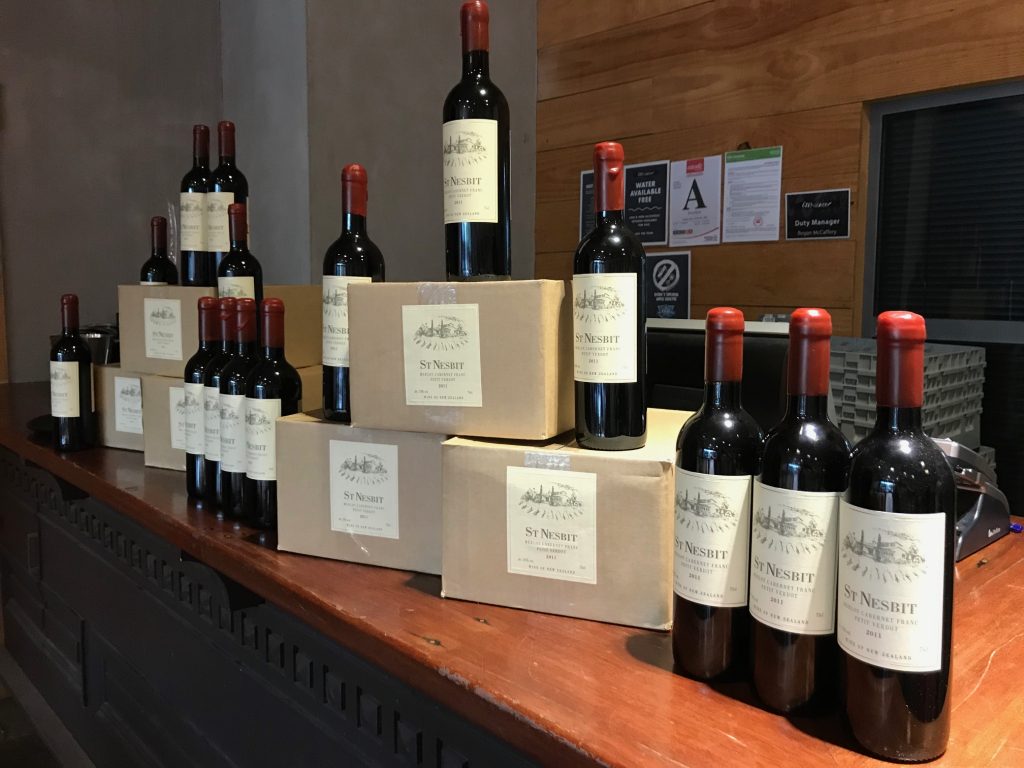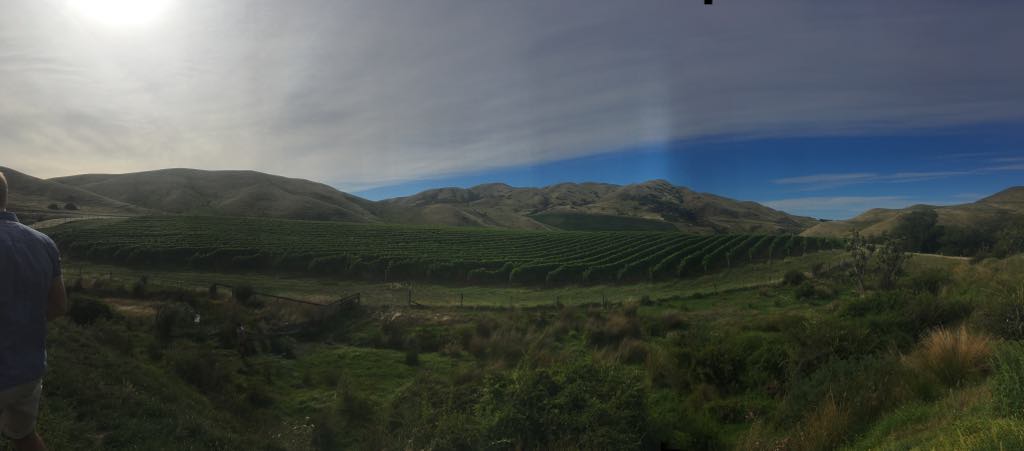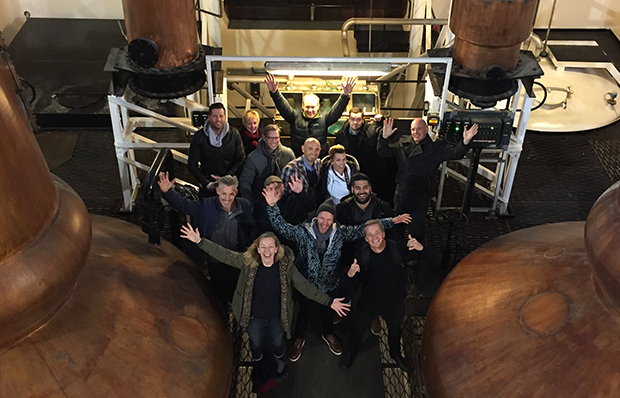On Tuesday night we were very privileged to host Dr Tony Molloy QC, and his son Sam for a spectacular vertical tasting of St Nesbit, one of New Zealand’s finest, and most interesting wines. The line-up spanned an impressive 11 vintages, from the inaugural 1984, through to the final 2011 vintage.

The vineyard was established in 1980 by Tony and his wife Petra, on 11 hectares of land on the Hingaia Peninsula. It lay in the shelter of the Drury Hills at Karaka about 30km south of Auckland City. Almost completed surrounded by an estuary of the Manukau Harbour and incredibly free draining, they originally found the site after a gilder pilot friend had said he couldn’t fly over due to the intense thermals.
The intention was to produce a Bordeaux style wine of a quality level well above anything seen in New Zealand at the time. Tony had no formal winemaking training, he was armed only with a 5000 page, multi volume winemaking guide in French, which he found in an old bookshop during a trip to Bordeaux.

Right from the beginning they employed techniques unknown in New Zealand. Wide and short open topped fermenters that were cooled by bore water. Fermentation was entirely through indigenous yeasts. A wooden lattice grid was designed to keep the cap totally submerged, meaning no need to plunge the skins and reduced oxidation. Therefore he used no sulphur at all during the process, to the great surprise of other winemakers. An unheard of 100% new French Oak was employed, and extended time in barrel of 2-3yrs. At the time they were the largest importer of new barrels in the country, with around 80 a year. Montana was the second biggest, with two barrels! This was at a time where most wineries were still using barrels that were brought over from Europe 40yrs prior.
They only made one wine, a Cabernet Sauvignon and Merlot blend which Tony named after his late Grandfather, NZ cricket Captain Nesbit Sneddon. As Tony explained, “In the canon law of the Catholic Church three miracles are required of a prospective saint. We got things a little back-to-front, in that we canonised Nesbit and then waited for the miracles to turn up by way of confirmation. They duly did as our first three vintages produced two gold medals plus the trophy for the top high-priced red wine at the Royal Easter Show.” Only around 3000 bottles were produced of each vintage, so it has always been a rare treat to come across one of these wines.

The iconic label, with its picture of the family home, had its layout and typeface shamelessly stolen from Bordeaux Chateau Pontet-Canet. The classic design has stood the test of time and changed little over the years, something other NZ wineries should take note of. They also kept them back, not releasing a vintage until they felt it was starting to drink well.
We were lucky enough this evening to taste many of the wines from the original vineyard. 1984, 1987, 1989, 1990 and 1991. The 1984 and 1987 were both well past their peak but still enjoyable, and would be lovely with dinner if you like mature wines. 1989 had more fruit remaining, interestingly this vintage was Merlot dominant. The 1990 and 1991 were drinking very well. None of the older vintages fell over and were still looking very nice at the end of the night.

Unfortunately at this time leaf roll virus had spread across the vineyards, and they were forced to remove them entirely. Deciding that Cabernet Sauvignon was not the right variety for the site, they took the opportunity to replant with Merlot, Cabernet Franc and Petit Verdot. These were low vigour rootstock and planted in very high densities. St Nesbit was in fact the first to import Petit Verdot into New Zealand, an extremely frustrating and time consuming process dealing with government departments.
After a decade long hiatus, the first vintage from the new vines was the fabulous 2002. This was 60% Merlot, 25% Petit Verdot and 15% Cabernet Franc. For me this wine is now drinking fantastically but will continue to hold. It shows all the elements that makes St Nesbit so special, Soft and elegant with warm savoury fruit, beautiful texture, lots of complexity, and even more character.

We also tried the 2003 which was never released by the family, as they didn’t think the quality was high enough. Yet in one of the mysteries of wine, this came around in the bottle years later and is now looking very good. The final vintages tasted were the 2007, 2008, 2009 and 2011. All were looking excellent, 2011 still needs plenty of time before I’d approach this for drinking at home. There is very little of the 2011 in the market as the family kept around half the production for their own future enjoyment.
They did make a 2010, which Sam described as being the greatest harvest they had ever seen. Having tasted it earlier this week, the wine is magnificent. With over three years in new oak it reminds me of a great Gran Riserva Rioja. It’s still a bit closed and the oak needs more time to integrate, so it will not be released until 2020 when it should really be hitting its stride. A fitting end to the St Nesbit story.

Unfortunately urban sprawl had finally made its way to Karaka. For twenty five years the Molloy family were the third house from the motorway off ramp, now there are over 2000 in between. With neighbours who didn’t appreciate birdshot landing in their washing, and skyrocketing rates, it was unsustainable to continue. For those lucky enough to have vintages of St Nesbit in their cellars, these wines will thankfully continue to bring enjoyment for decades to come.



